| Compact car; Built in Canada, Japan |
|
|
| Good condition price range: $1,000 – $1,400* |
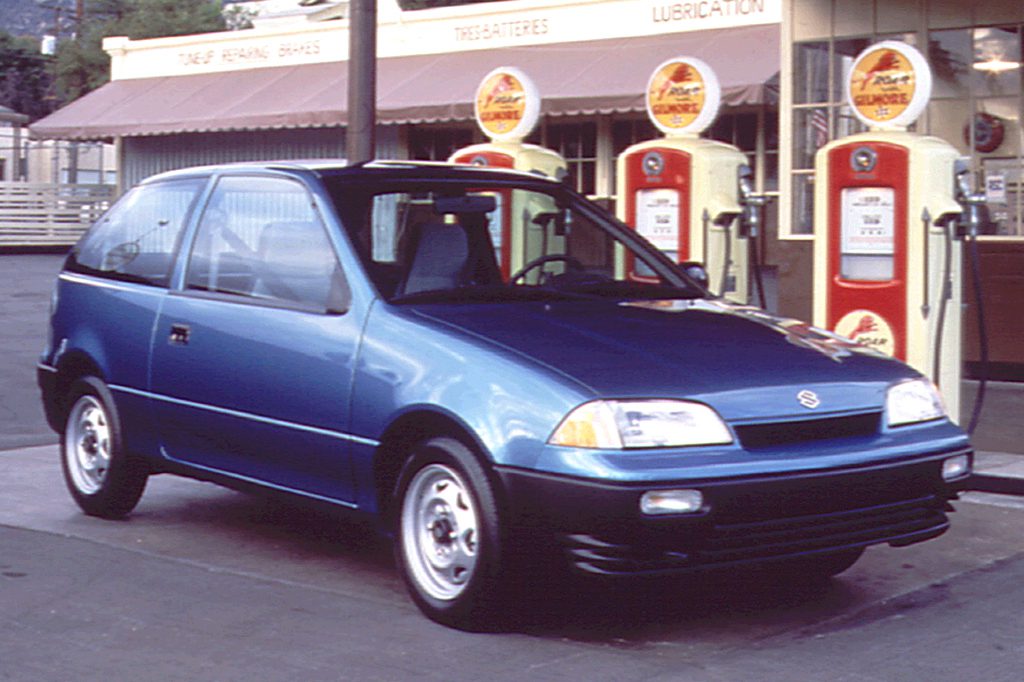
1992 Suzuki Swift GA 2-doorhatchback
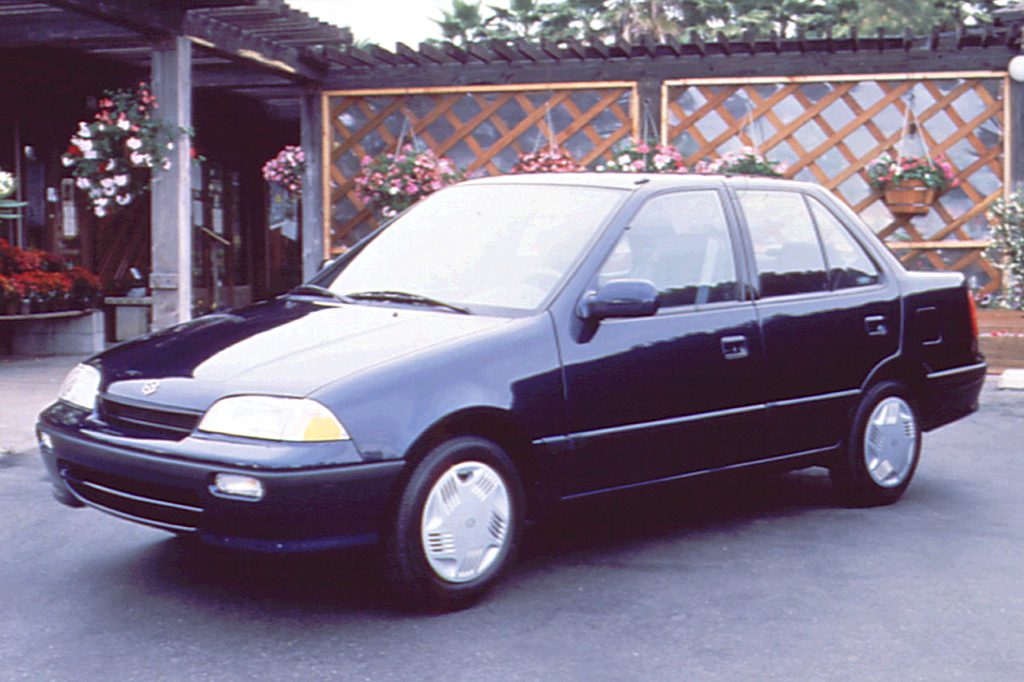
1992 Suzuki Swift GS 4-door sedan
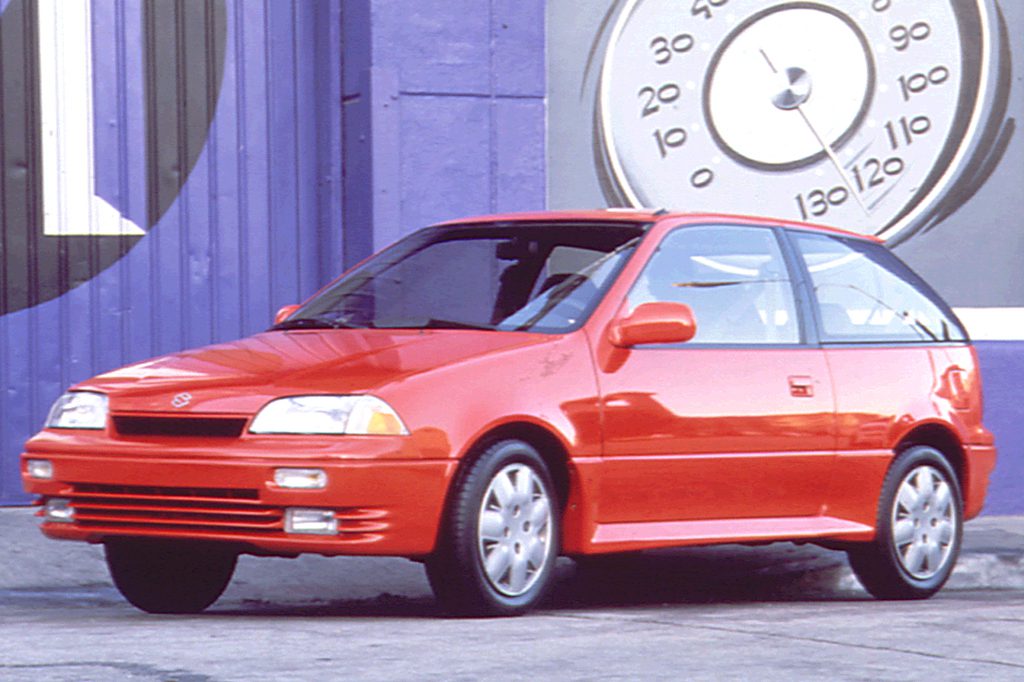
1992 Suzuki Swift GT 2-door hatchback
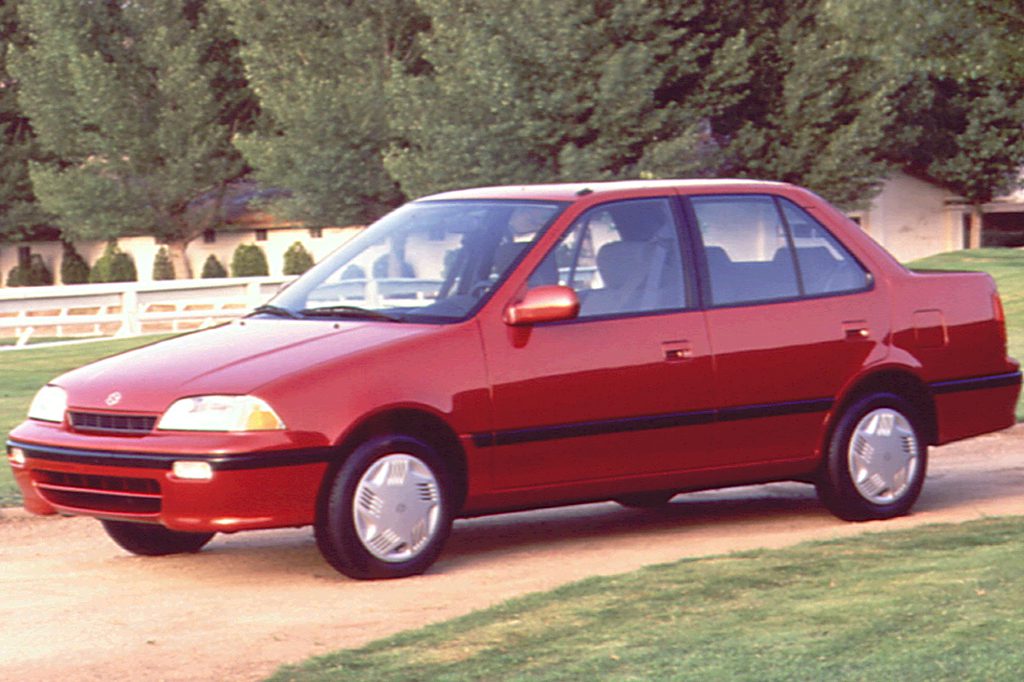
1993 Suzuki Swift GS 4-door sedan
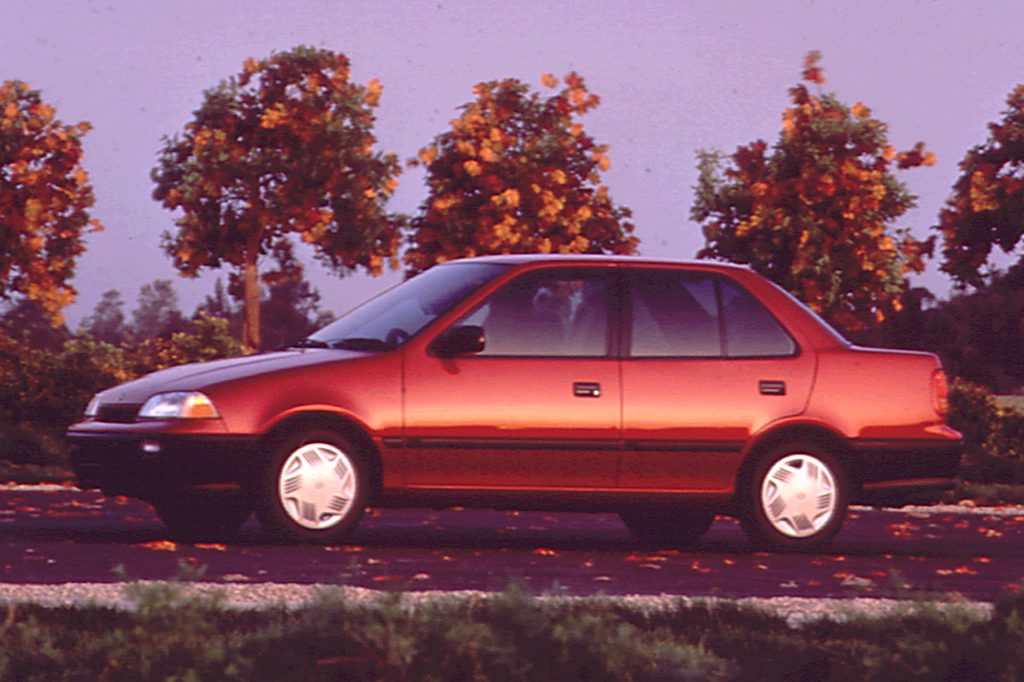
1994 Suzuki Swift 4-door sedan
| Pros: |
|
| Cons: |
|
For the most part, Swifts have reminded us of Japanese subcompacts from the mid-1980s: noisy, cramped, basic–but stingy with fuel. As economical runabouts, they’ll do–but just barely.
Overview
Introduced for 1989, the Swift came in 2-door hatchback and 4-door notchback form. Riding a longer wheelbase than the 2-door, the 4-door model came in GA, GL, and GS trim, with a 70 horsepower, 1.3-liter 4-cylinder engine. The GA edition came only with 5-speed manual shift, while other Swifts had a choice of the 5-speed or 3-speed automatic transmission. Two-door hatchbacks came three ways, too: entry-level GA, midlevel GL, and sporty GT. Equipped with a dual-overhead-cam 1.3-liter engine, the GT included a close-ratio 5-speed manual gearbox, 4-wheel disc brakes, sport seats, sport suspension, and 175/60R14 tires. Swift was also marketed under the Geo brand as the Metro.
Yearly Updates
| 1991 Swift The GL 2-door hatchback and GL 4-door notchback sedan were gone. Two hatchbacks carried on: a base GA with the 70 horsepower engine and the sporty GT with its 100-horse dual-cam engine. Four-door models came in GA and GS trim, each with the 70-horsepower engine and a choice of transmissions. |
| 1992 Swift All models got redesigned front fascias and a fresh dashboard layout. |
| 1993 Swift Automatic-locking front doors were installed for 1993, but little else was new. |
| 1994 Swift Base GA models added a passenger-side mirror, and the GA hatchback got a removable cargo cover. Swifts were redesigned for 1995. |
